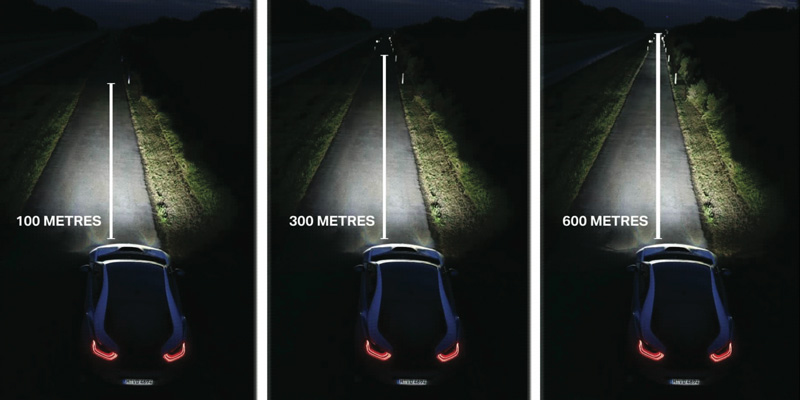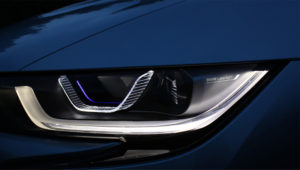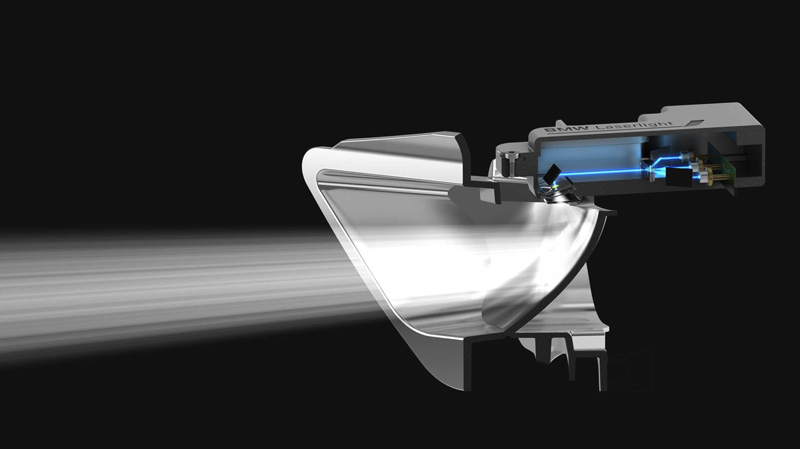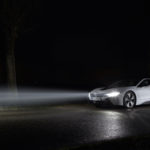Jonathan Sampson, MD at Automate, explains how laser technology looks set to illuminate the future of headlight technology – and sooner than we might think.
There’s something mythical about laser technology – there’s a ring to its name that seems so sci-fi and futuristic that it rarely fails to ignite the 12 year old inside all of us. What’s more, for the best part of 50 years, this tech has played a fundamental role in almost all aspects of mankind’s quest for technological advancement – health science, communications, commerce, computing; this remarkable invention has helped shape and reshape them all.
The laser has been with us since 1960, and in that time it’s allowed us to make trans- oceanic phone calls via fibre-optic cable; assisted doctors with complex retina surgery; helped manipulate biological samples of red blood cells, and given us that modern day miracle called the internet. The laser even helped bring the English and French closer together; when building the Channel Tunnel in 1988, laser surveying helped the two tunnelling operations meet with just inches of misalignment over 15 miles.
How lasers are changing the way we think about headlights
Now, though, it’s the automotive industry’s turn to wield laser-power, and the advancements the technology promises are remarkable, if not completely new. In fact, car manufacturers have been experimenting with using lasers to advance headlight performance for almost four years now, but it’s only recently that we’ve started to see the technology spread. The first burning question to address is: how can a beam of laser light provide the kind of illumination expected from a car’s headlights? In the layman’s imagination, the laser is a thin, powerful beam of light that cuts through metal and burns your retinas. It makes for great science fiction, but laser beams shooting out of headlights seems an impracticable, if highly-futuristic vision.
In fact, the laser headlight concept is very much current, and the reality is rather different to having two light-sabres protruding from the front of your car. BMW and Audi have been the pioneers of this tech, both on the road and on the racetrack, and it is possible to buy a production car right now with the tech fitted. So let’s understand how this tech could change what we’ve come to expect from headlight performance.

Reflection, refraction and re- direction – how the laser concept works
Yes, direct laser light is powerful, but the beam itself is also focused and cannot provide the broad pattern of light, or the colouring, that car headlights require. So, instead, laser headlights work using the principle of re-directing, reflecting and filtering the beam to produce illumination.
BMW’s system is a case in point. By aiming three beams of blue laser at a set of mirrors, the direction of the light is reversed so that it can pass into a lens filled with yellow phosphorous. This crucial chemical emits a bright, white light when excited by the presence of a blue laser, in a process known as chemiluminescence. The white light is then directed into a reflector, the curved surface of which diffuses the light into a broad beam that exits the headlight and illuminates the road ahead.
BMW claims the white light produced by the chemiluminescent reaction is up to 1,000 times brighter than an LED light, and the efficiency of the laser-diode means the set-up consumes between two-thirds and half the power of a light-emitting-diode. In context, the laser headlight can illuminate up to 600m ahead of the car, compared to the 300m range that current LED high-beams are capable of. Perhaps more critical, though, is that the light produced by the system has a colour temperature between 5,500 and 6,000 Kelvin – almost exactly the colour and intensity of natural daylight.
The reality of laser headlights in production cars
Currently, laser headlights in production cars are extremely limited. BMW can sell you its plug-in hybrid i8 supercar with laser technology, but there are some caveats to the production-ready system. Despite being fitted to a car that costs in excess of £100,000, BMW will charge you £7,995 to fit Laserlights. That seems an awful lot for a system that only activates on high-beam, and above 37mph, for fear of causing excessive light pollution.
Audi, meanwhile, has found success with the system in its Le Mans endurance racing program, but has introduced laser headlights for the road only on a limited edition version of the R8 supercar. Nevertheless, the company now plans to take laser lighting to the next level, with a system called Matrix Laser headlights. These replace the curved reflector found in the BMW set-up with a digital micro-mirror – basically an array of thousands of tiny mirrors, which can be tilted up to 5,000 times per second to break the beam into disparate pixels. Using on-board cameras to monitor the road ahead, the system can selectively shield the light beam away from oncoming traffic, so the high- beams can be left on permanently.
Audi employs a similar set-up for its LED headlights, but the accuracy and intensity of the laser-diode means the Laser Matrix is more effective. What’s more, the pixelated light can be used to form images and project them onto the road surface. Audi claims that this would be useful as a method of communicating between other drivers and people. The company’s vision of a future Laser Matrix system, which is the fruit of a three-year partnership between Bosch, OSRAM Licht AG and the Karlsruhe Institute for Technology, imagines Audi drivers being able to project virtual footprints in front of the car when it’s safe for a pedestrian to cross, and actively illuminate the lane markings for everyone in the car’s vicinity.
Thanks to Germany’s efforts to develop the laser headlight concept, the future of illumination is looking very bright.











